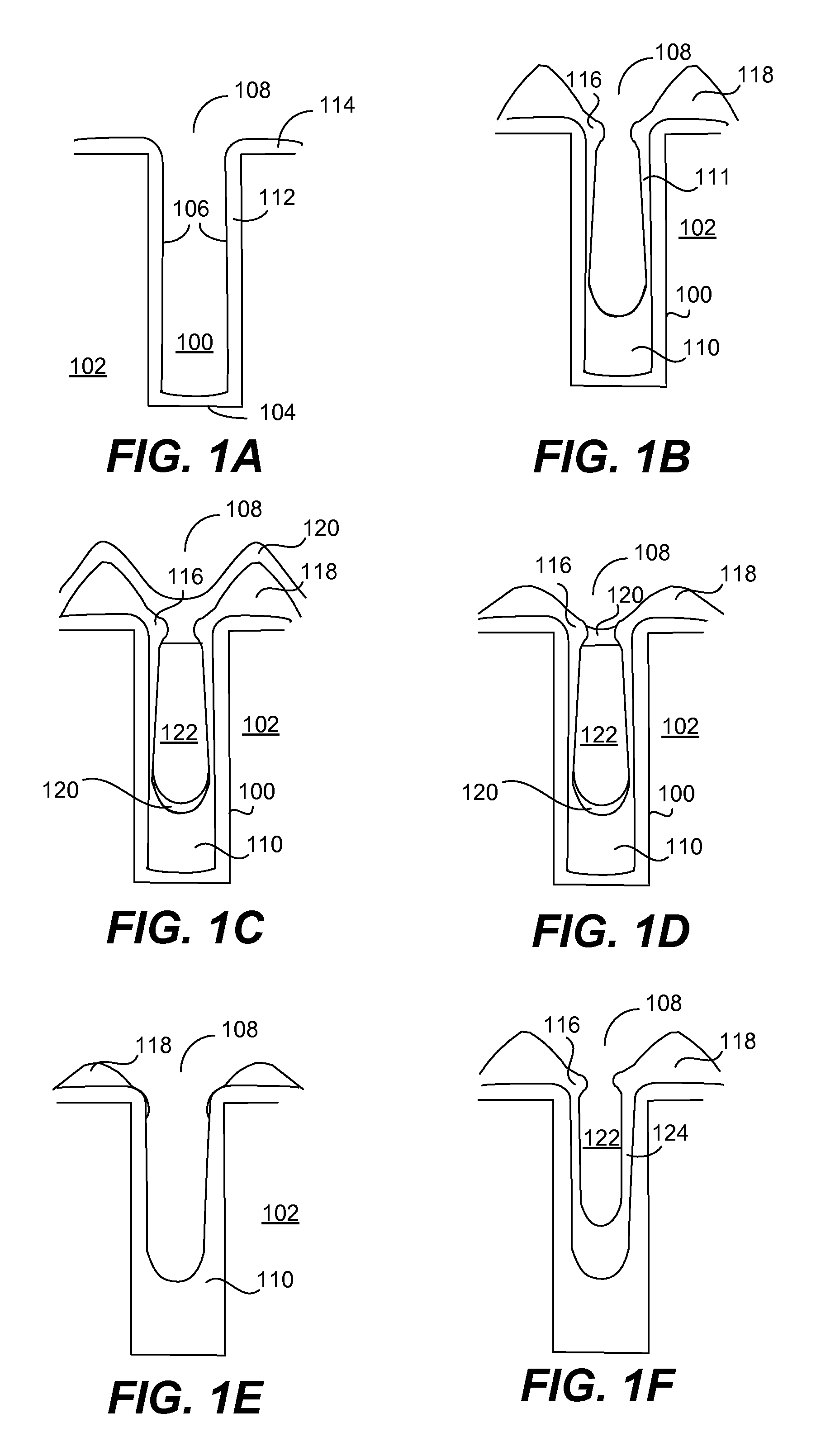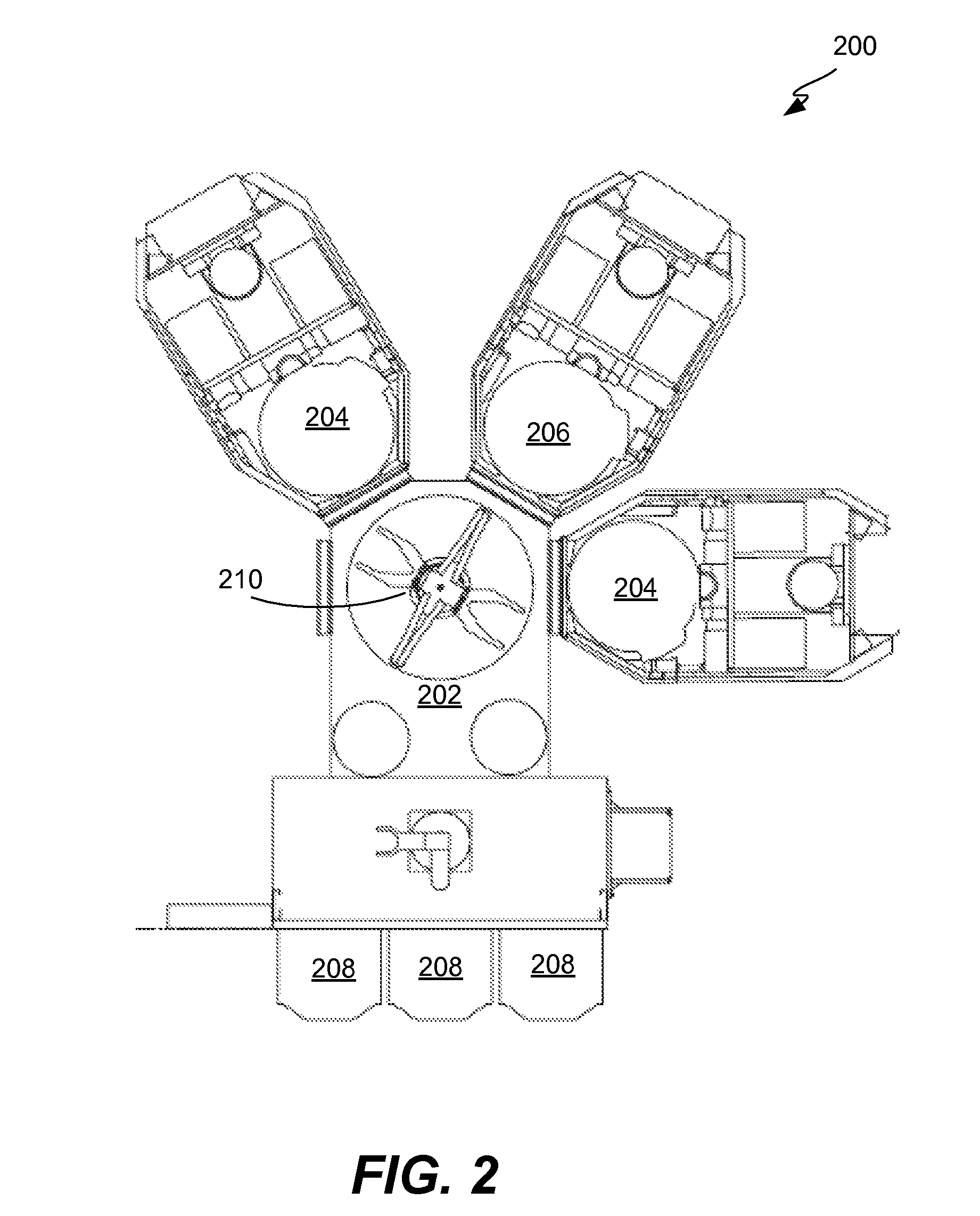In-situ process layer using silicon-rich-oxide for etch selectivity in high AR gapfill
a technology of silicon-rich-oxide and process layer, which is applied in the direction of chemical vapor deposition coating, metallic material coating process, coating, etc., can solve the problem that the etching of reactive plasma may not be fully isotropic, and achieve the effect of reducing the incidence of voids or weak spots
- Summary
- Abstract
- Description
- Claims
- Application Information
AI Technical Summary
Benefits of technology
Problems solved by technology
Method used
Image
Examples
example
[0114]The following example is provided to illustrate certain aspects of the present invention. The example will serve to further illustrate the invention but is not meant to limit the scope of the invention in any way.
[0115]In this example, one embodiment of the methods discussed herein was practiced on a SPEED semiconductor processing tool from Novellus Systems. First a layer of dielectric was deposited using an HDP CVD reactor onto multiple substrates having gaps. The thickness of the bottom fill, the top hat, and the sidewalls were measured and plotted in FIG. 4 as “Dep.” After the initial deposition, the bottom thickness was about 980 angstroms; the top hat, about 1250 angstroms; and the sidewall, about 177 angstroms. The aspect ratio of the remaining gap was measured and shown in FIG. 5. After the initial deposition, the aspect ratio was about 7.8.
[0116]After the initial deposition, an SRO etch selectivity layer was deposited onto one of the substrates. The SRO was deposited o...
PUM
| Property | Measurement | Unit |
|---|---|---|
| thickness | aaaaa | aaaaa |
| thickness | aaaaa | aaaaa |
| pressures | aaaaa | aaaaa |
Abstract
Description
Claims
Application Information
 Login to View More
Login to View More - R&D
- Intellectual Property
- Life Sciences
- Materials
- Tech Scout
- Unparalleled Data Quality
- Higher Quality Content
- 60% Fewer Hallucinations
Browse by: Latest US Patents, China's latest patents, Technical Efficacy Thesaurus, Application Domain, Technology Topic, Popular Technical Reports.
© 2025 PatSnap. All rights reserved.Legal|Privacy policy|Modern Slavery Act Transparency Statement|Sitemap|About US| Contact US: help@patsnap.com



